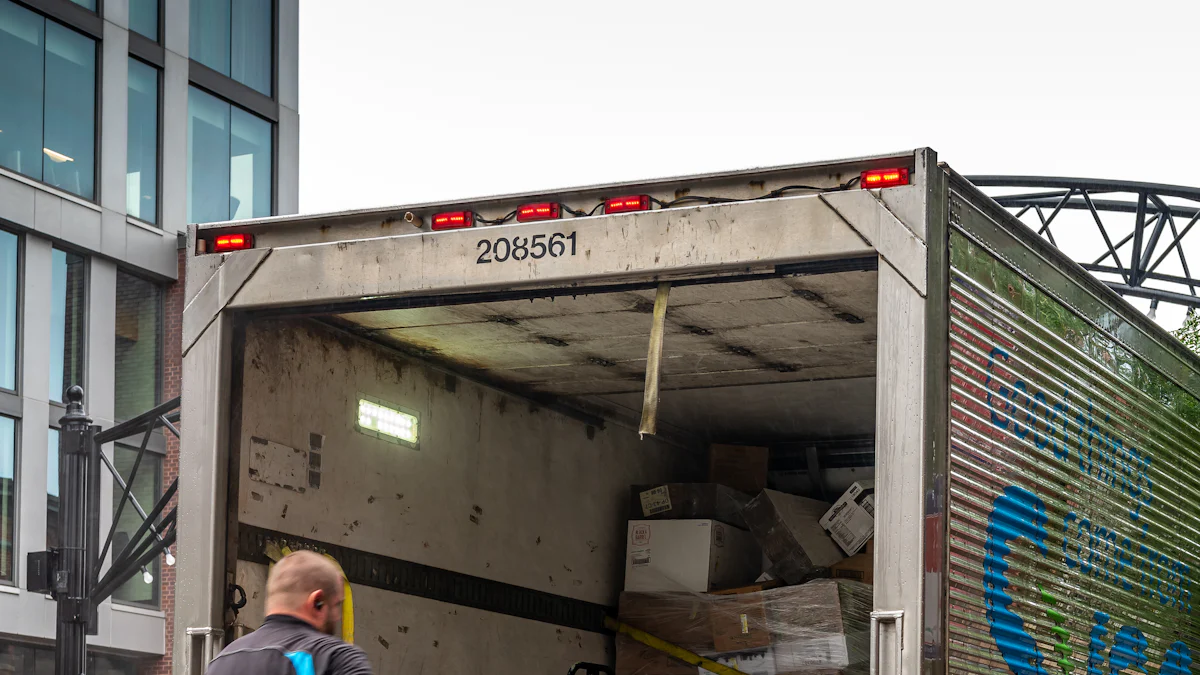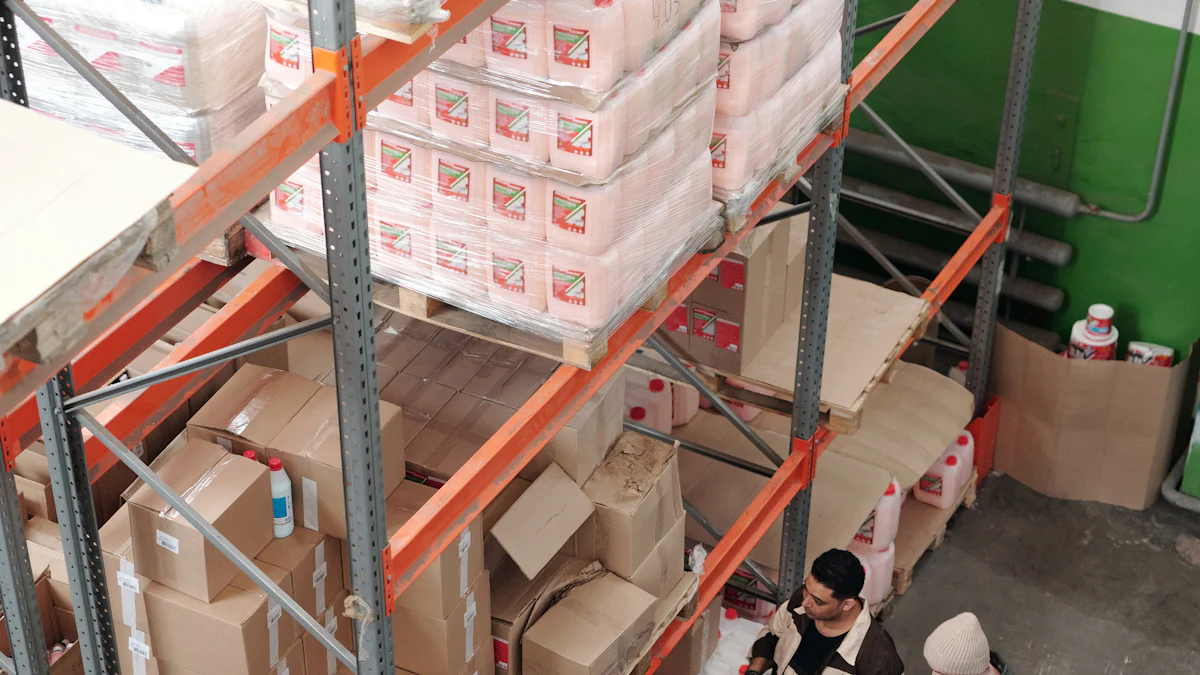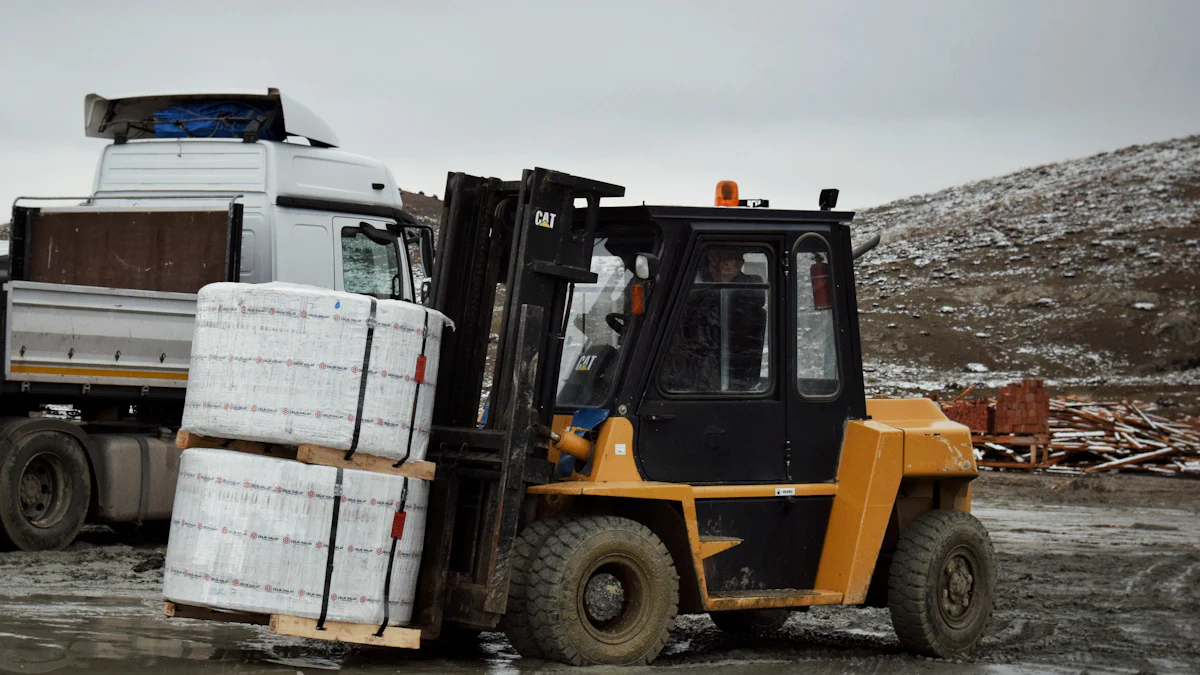
Proper unloading techniques prevent injuries and damage to goods. Truck unloading pallet jack operations require careful handling. Pallet jacks serve as essential tools in this process. Safety and efficiency must always be a priority. Workers face risks like sprains, strains, and spinal injuries from improper handling. Crushing injuries can occur from collisions or falls. Always ensure the vehicle is stable before unloading. Following these guidelines ensures a safer and more efficient unloading process.
Preparing for Unloading
Safety Precautions
Personal Protective Equipment (PPE)
Always wear Personal Protective Equipment (PPE). Essential items include safety gloves, steel-toed boots, and high-visibility vests. Helmets protect against head injuries. Safety glasses shield eyes from debris. PPE minimizes the risk of injury during truck unloading pallet jack operations.
Inspecting the Pallet Jack
Inspect pallet jacks before use. Check for visible damage. Ensure the wheels function smoothly. Verify that the forks are straight and undamaged. Test the hydraulic system for proper operation. Regular inspections prevent equipment failure and accidents.
Checking the Truck’s Condition
Examine the truck’s condition. Ensure the truck is parked on a level surface. Check that the brakes are engaged. Look for any leaks or damage in the truck bed. Confirm that the truck’s doors open and close properly. A stable truck ensures a safe unloading process.
Planning the Unloading Process
Assessing the Load
Evaluate the load before unloading. Identify the weight and size of each pallet. Ensure that the load is secure and balanced. Look for any signs of damage or instability. Proper assessment prevents accidents and ensures efficient unloading.
Determining the Unloading Sequence
Plan the unloading sequence. Determine which pallets to unload first. Start with the heaviest or most accessible pallets. Organize the sequence to minimize movement and effort. A well-planned sequence speeds up the process and reduces the risk of injury.
Ensuring Clear Pathways
Clear pathways before starting. Remove any obstacles from the truck bed and unloading area. Ensure there is enough space to maneuver pallet jacks. Mark any hazardous areas with warning signs. Clear pathways enhance safety and efficiency during truck unloading pallet jack operations.
Operating the Pallet Jack

Basic Operation
Understanding the Controls
Familiarize yourself with the controls of pallet jacks. Locate the handle, which serves as the primary control mechanism. The handle typically includes a lever for raising and lowering the forks. Ensure you understand how to engage the hydraulic lift system. Practice using the controls in an open area before starting the unloading process.
Proper Handling Techniques
Adopt proper handling techniques to ensure safety. Always push the pallet jack rather than pulling it. Keep your back straight and use your legs to provide the necessary force. Avoid sudden movements to prevent losing control of the load. Maintain a firm grip on the handle at all times. Proper handling reduces the risk of injury and enhances efficiency.
Loading the Pallet Jack
Positioning the Forks
Position the forks correctly before lifting a pallet. Align the forks with the openings on the pallet. Ensure the forks are centered and straight. Insert the forks fully into the pallet to provide maximum support. Correct positioning prevents accidents and ensures a stable load.
Lifting the Pallet
Lift the pallet by engaging the hydraulic system. Pull the lever on the handle to raise the forks. Lift the pallet just enough to clear the ground. Avoid lifting the pallet too high to maintain stability. Check that the load remains balanced during the lifting process. Proper lifting techniques protect both the operator and the goods.
Securing the Load
Secure the load before moving the pallet jack. Ensure the pallet is stable and centered on the forks. Check for any loose items that may fall during transport. Use straps or other securing devices if necessary. A secured load minimizes the risk of accidents and damage to goods.
Unloading the Truck

Moving the Pallet Jack
Navigating the Truck Bed
Move the pallet jack carefully across the truck bed. Ensure the forks remain low to maintain stability. Watch for any uneven surfaces or debris that could cause tripping. Keep a steady pace to avoid sudden movements. Always stay aware of your surroundings.
Maneuvering in Tight Spaces
Maneuver the pallet jack with precision in tight spaces. Use small, controlled movements to navigate around obstacles. Position yourself to have a clear view of the path. Avoid sharp turns that could destabilize the load. Practice in open areas to improve your skills.
Placing the Load
Lowering the Pallet
Lower the pallet gently to the ground. Engage the hydraulic system to gradually lower the forks. Ensure the pallet remains balanced during this process. Avoid dropping the load abruptly to prevent damage. Check that the pallet is stable before moving away.
Positioning in the Storage Area
Position the pallet in the designated storage area. Align the pallet with other stored items to maximize space. Ensure there is enough room for future access. Use floor markings if available to guide placement. Proper positioning enhances organization and efficiency.
Ensuring Stability
Ensure the stability of the load once placed. Check that the pallet sits flat on the ground. Look for any signs of tilting or imbalance. Adjust the position if necessary to achieve stability. A stable load prevents accidents and maintains order in the storage area.
Post-Unloading Procedures
Inspecting the Pallet Jack
Checking for Damage
Inspect the pallet jack after unloading. Look for any visible damage. Check the forks for bends or cracks. Examine the wheels for wear and tear. Ensure the hydraulic system functions correctly. Identifying damage early prevents future accidents.
Performing Maintenance
Perform regular maintenance on the pallet jack. Lubricate the moving parts. Tighten any loose bolts. Replace worn-out components. Keep a maintenance log for reference. Regular upkeep extends the life of the equipment and ensures safe operation.
Final Safety Checks
Verifying Load Placement
Verify the placement of the load in the storage area. Ensure the pallet sits flat on the ground. Check for any signs of tilting or imbalance. Adjust the position if necessary. Proper placement maintains order and prevents accidents.
Securing the Truck
Secure the truck before leaving the unloading area. Engage the parking brake. Close and lock the truck doors. Inspect the area for any remaining debris. A secured truck ensures safety and prevents unauthorized access.
“Addressing delays in unloading and processing inbound goods can decrease delivery time by 20% within three months,” says a Warehouse Operations Manager. Implementing these procedures can improve productivity and accuracy.
Recap the key points covered in this guide. Always prioritize safety when unloading a truck with a pallet jack. Use proper techniques and follow outlined procedures to prevent injuries and damage.
“One success story I would like to highlight is a team member who struggled with organizing inventory. After identifying this weakness, I created a customized training plan that involved hands-on training, regular feedback, and coaching. As a result, this team member’s organization skills improved by 50% and our inventory accuracy improved from 85% to 95%,” says an Operations Manager.
Encourage adherence to best practices for optimal results. Invite feedback or questions to foster continuous improvement.
Post time: Jul-08-2024
